
Requiem of a Caretaker: Solo Exhibition, 2022
This series of three works explores the role of a daughter as a caretaker for her late father, who passed away December 18, 2021, from a rare and aggressive form of Dementia. I refer to each work as particular parts of a requiem (an arrangement of music for–or based upon–the Catholic Mass for the Dead), because all of the works have a particular ritualistic rhythm, a collective narrative “structure,” and the sound from each film creates a symphonic effect when shown as a group. The works, in their sequence, explore the ritual of care-taking for a person with severe dementia, the realization of the fact that the subject was dying quickly and ultimately his death, and the experience of “crisis” that arises when one is no longer in the role of caretaker–a crisis of identity and purpose.
Introit: Oblatio
Experimental documentary/expanded cinema, two-channel projection on bedsheets with objects of caretaking, 30:00
The “Introit” is the first part of a Requiem composition. It begins: Requiem æternam dona eis, Domine: et lux perpetua luceat eis. (Eternal rest give unto them, O Lord, and let perpetual light shine upon them.) Oblatio is Latin for “oblation,” an act of love and devotion. The title connotes the act of caretaking, and we see the artist doing nightly “cares” for her father (quickly declining from dementia): in particular, the most difficult part of the bedtime routine, getting him into bed for the night. We see the ritual from start to finish, viewing seven different nights through transparent layers. The film melds together the experiences of a father with dementia (and what that might be like) and a daughter as his caretaker. Thus begins the Requiem: she grants him rest every night, but there was no rest for her. The natural lighting and tones in the film, accentuated by transparent layering, adds an effect of otherworldliness, thus evoking a sense of “perpetual light.”
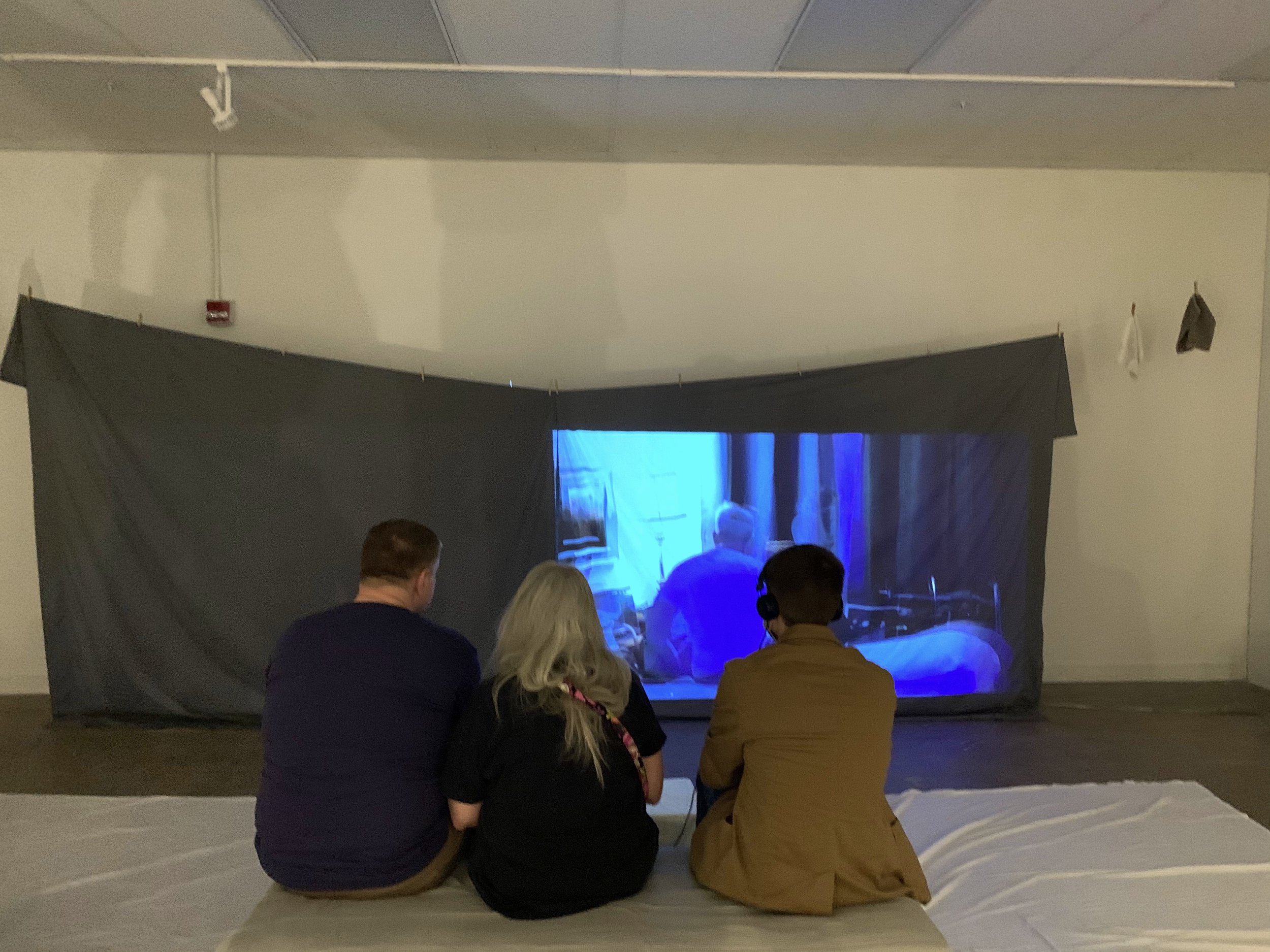
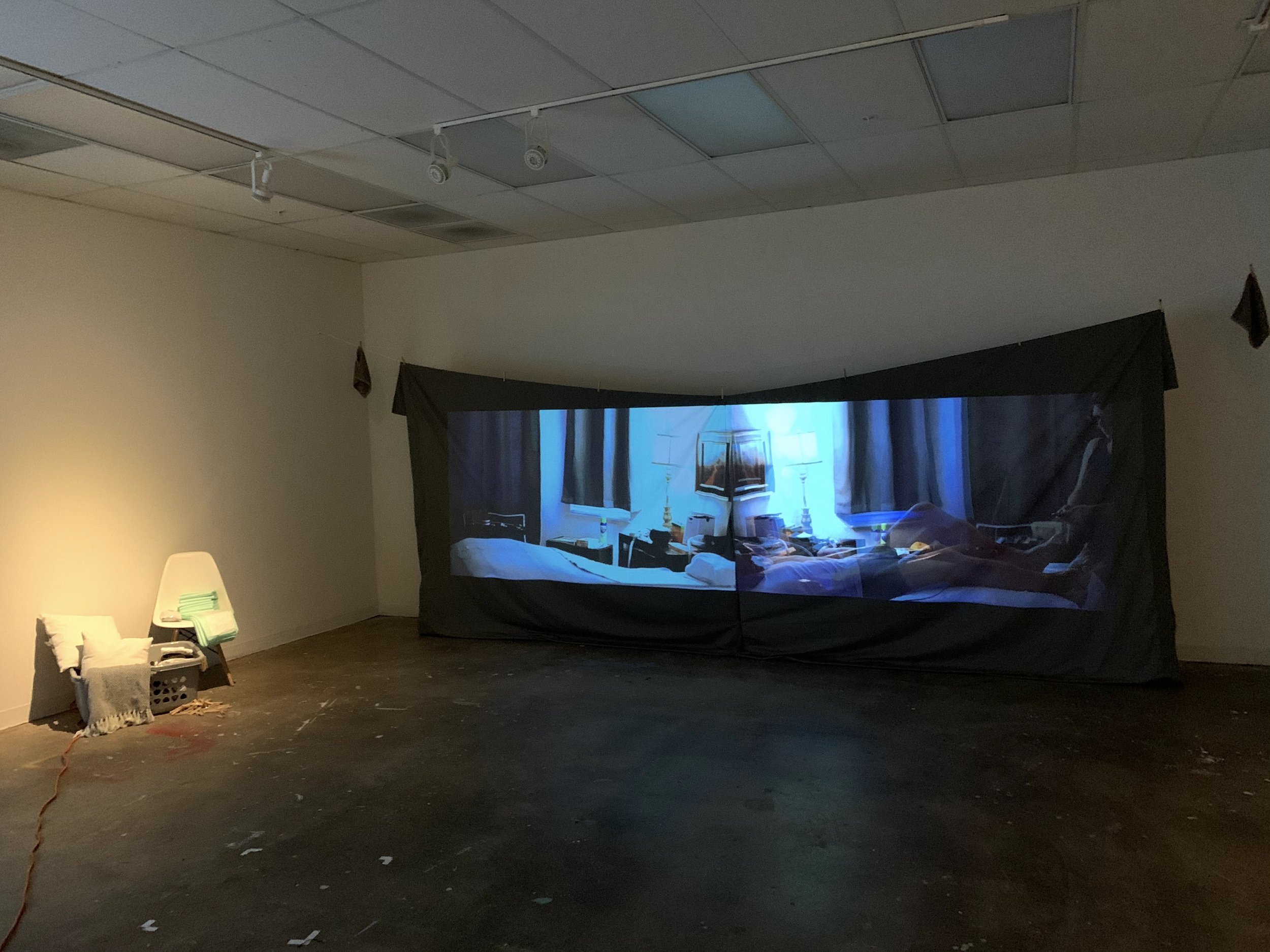
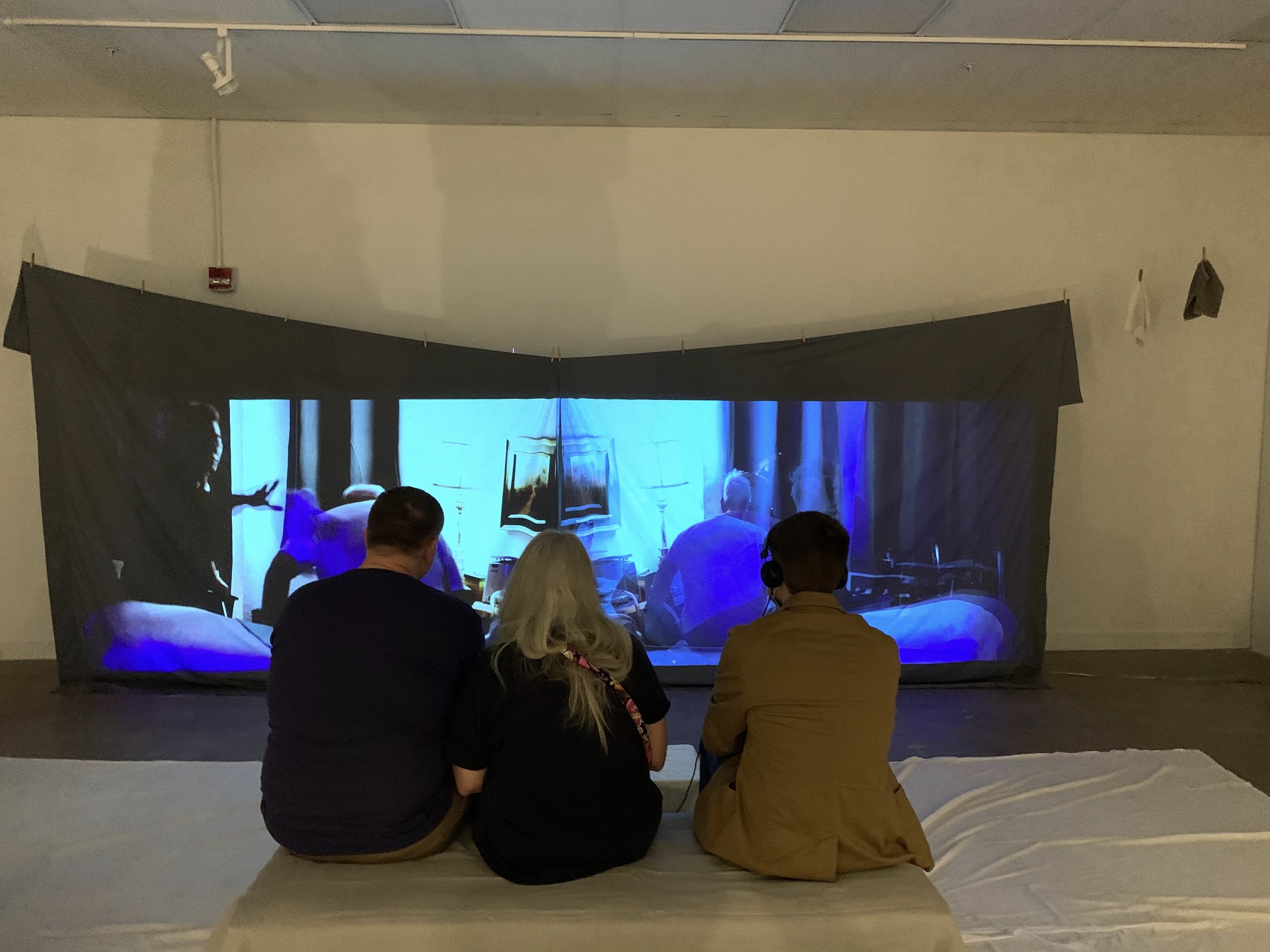
Libera me: Veritas
The "Libera me" ("Deliver me") is a prayer sung at the funeral Mass for absolution of the dead, and it is also prayed beside the coffin immediately after the Requiem Mass and before burial. It begins with: Libera me, Domine, de morte æterna, in die illa tremenda (Deliver me, O Lord, from death eternal on that awful day. When the heavens and the earth shall be moved). Veritas is Latin for “truth” or “realization.” After hearing her father had a couple of weeks to live, the artist came to a strange realization: she had already grieved the loss of his “person” over time, as he had not been “himself” for over a year, but she had yet to grieve the loss of his “presence.”
The intention of the performance is to expose that strange emotion. Using his hospital bedsheets, a washcloth used often in bathing him, and a mixture of craft paint, the artist expresses many folds of emotion by painting a simple, yet powerful phrase.
Experimental video performance/expanded cinema, projection on bedsheet with objects from the performance, 13:00 (Film Stills)
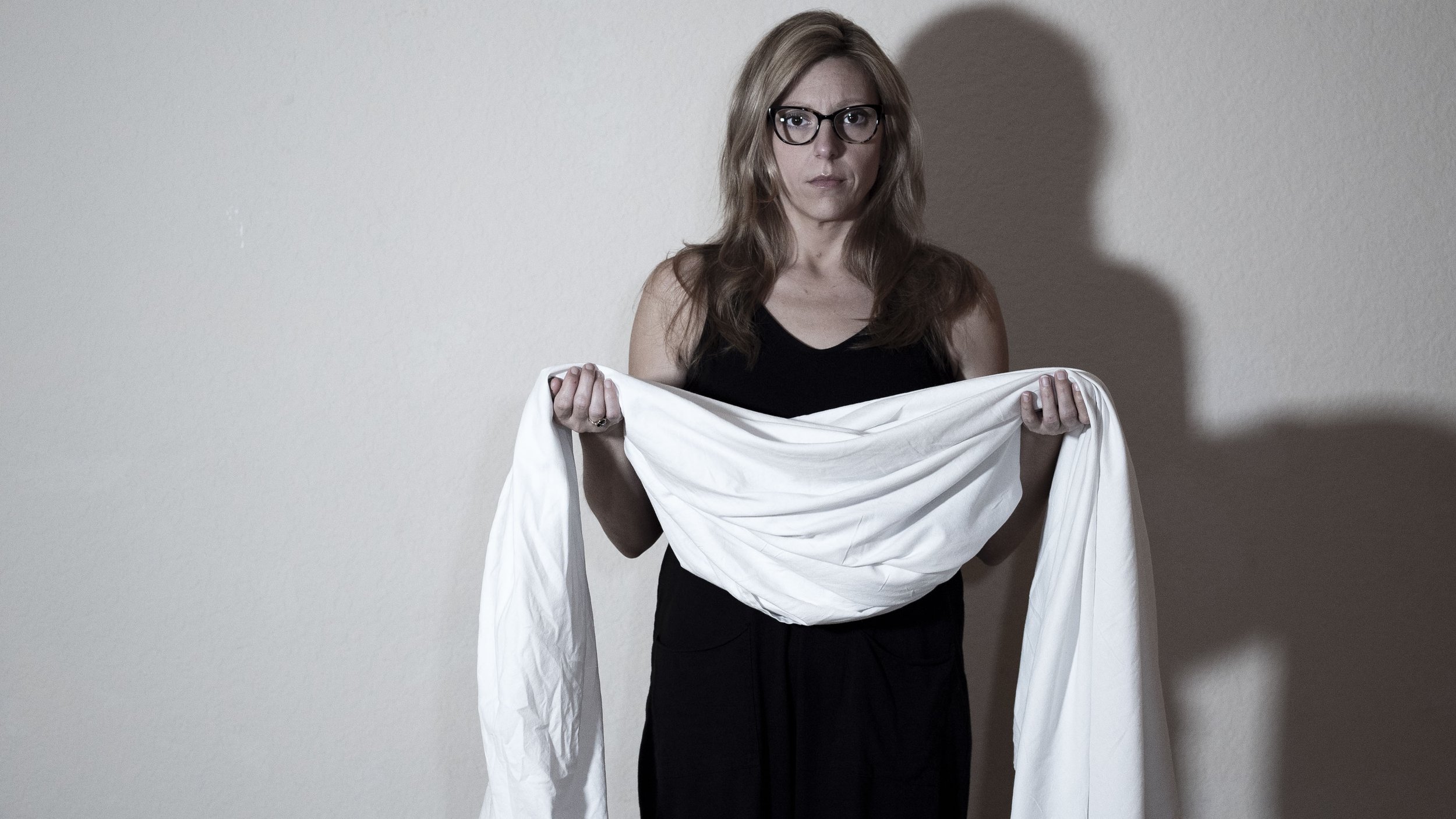
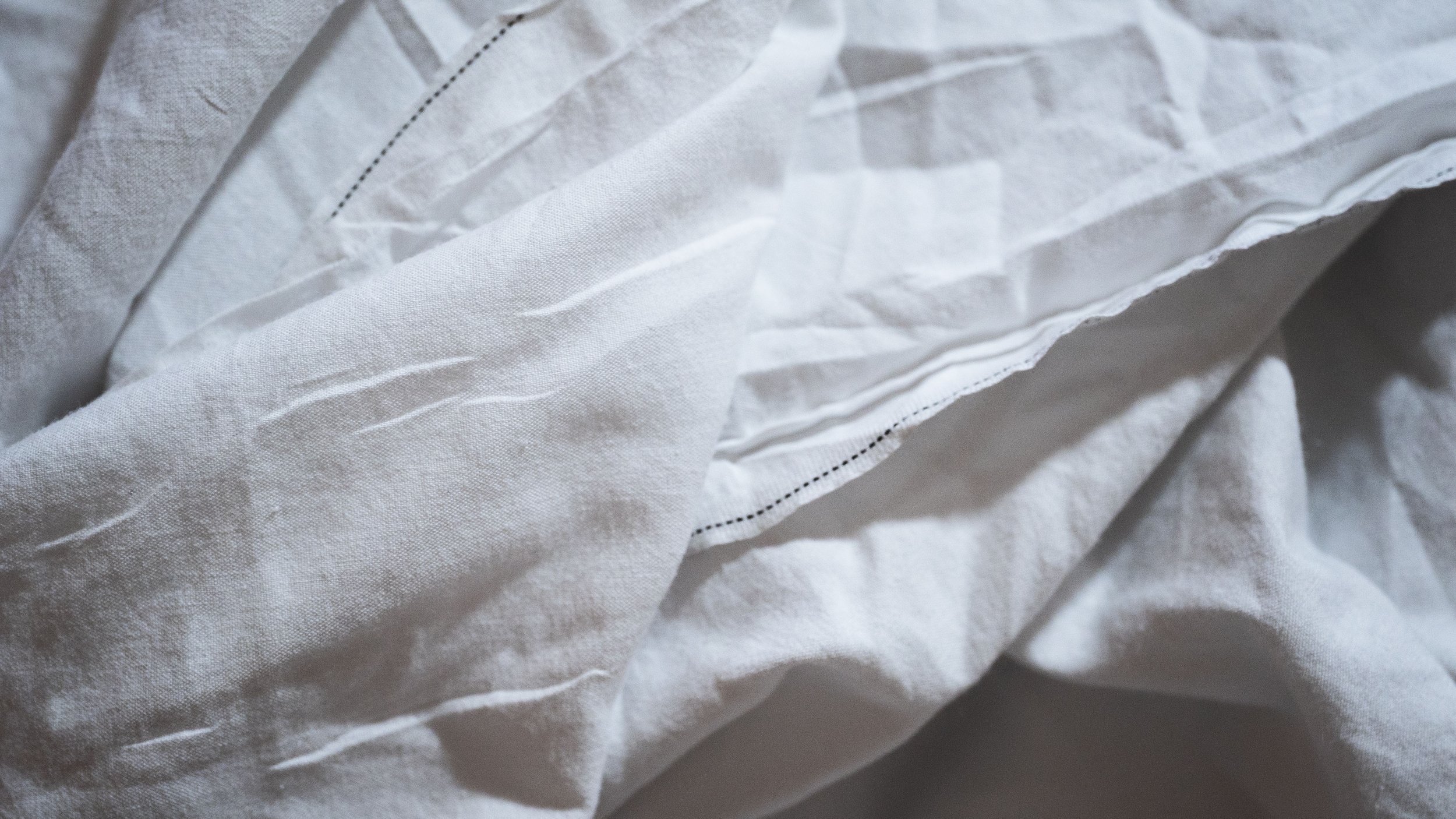

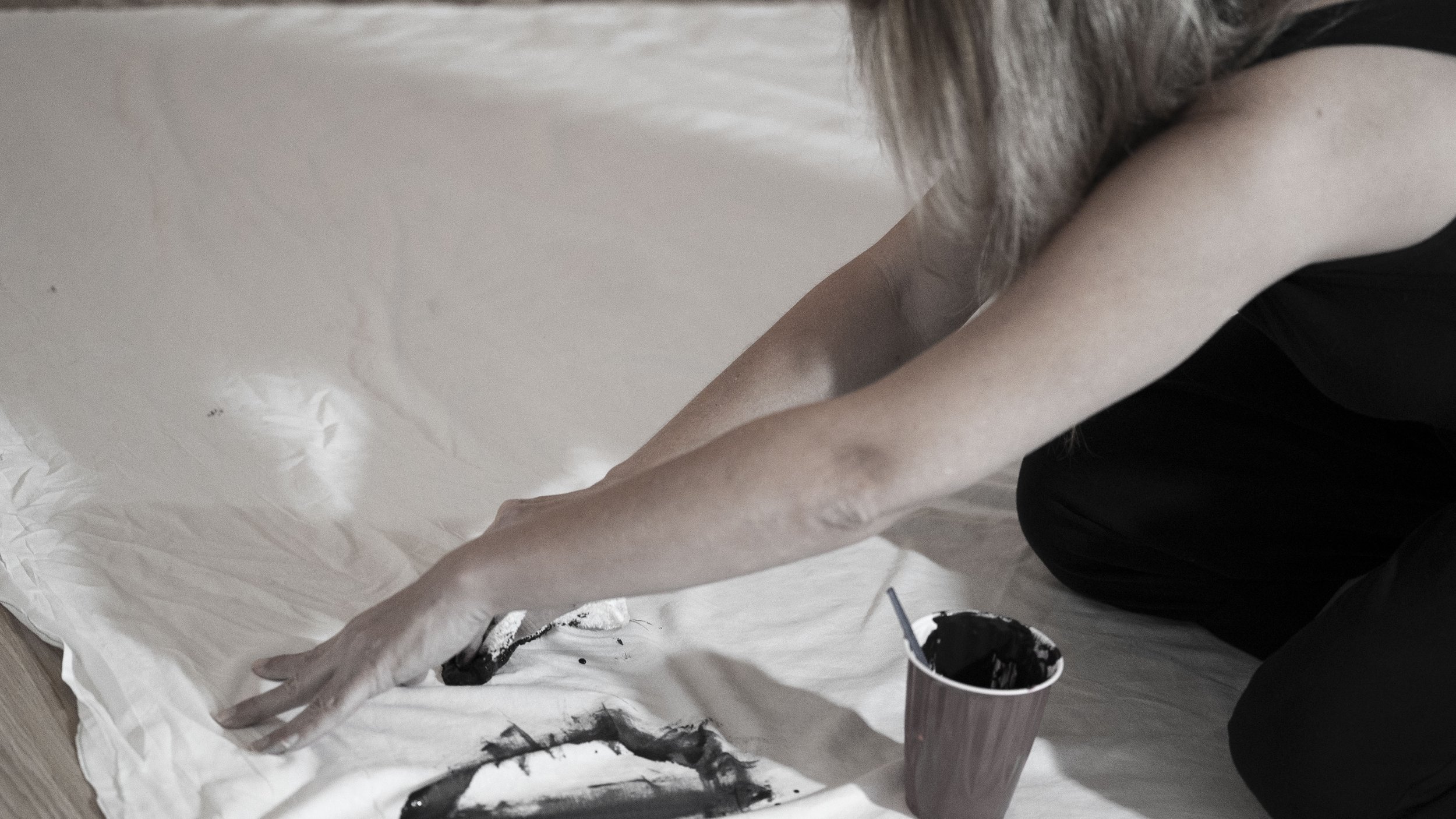






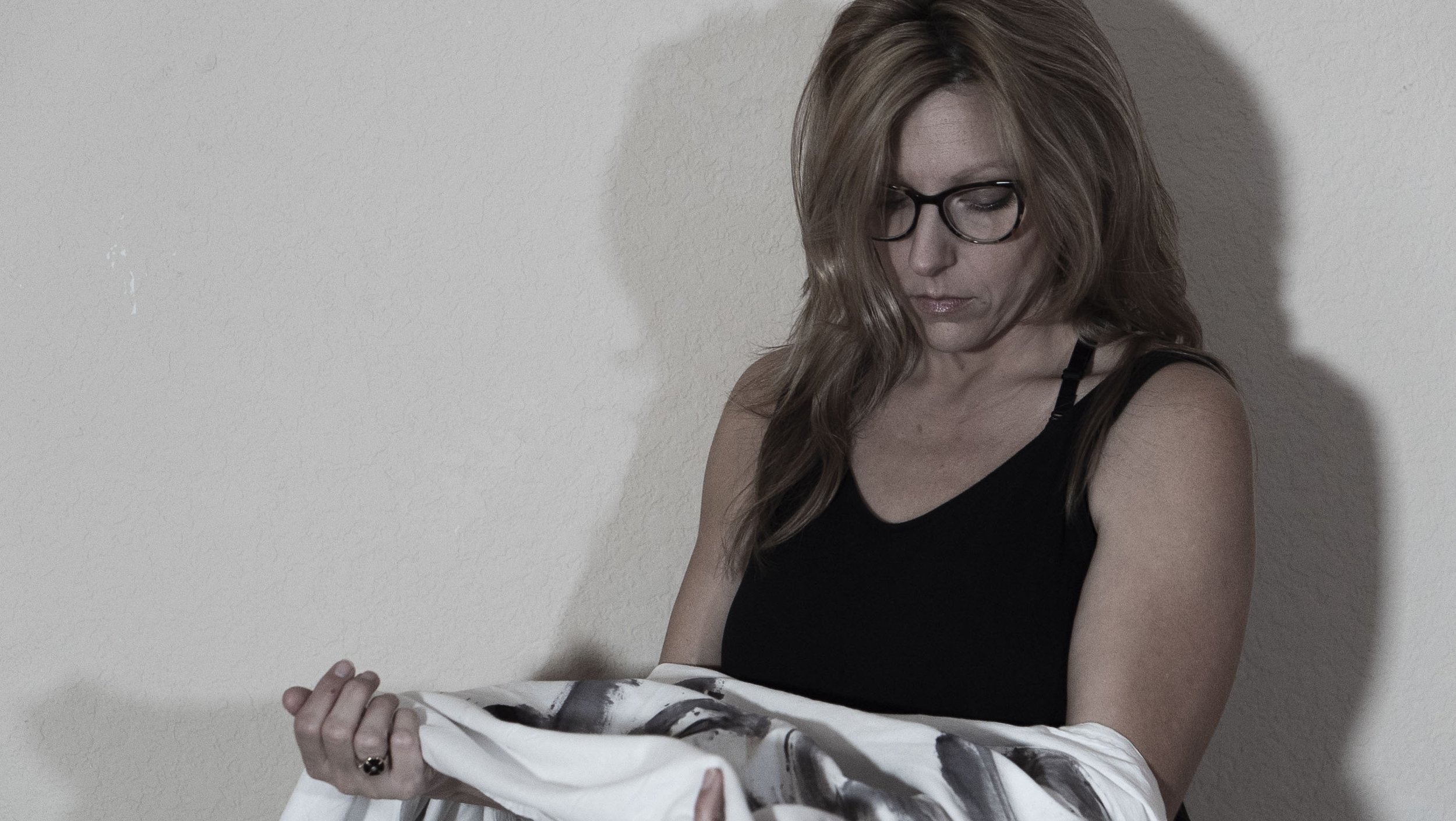
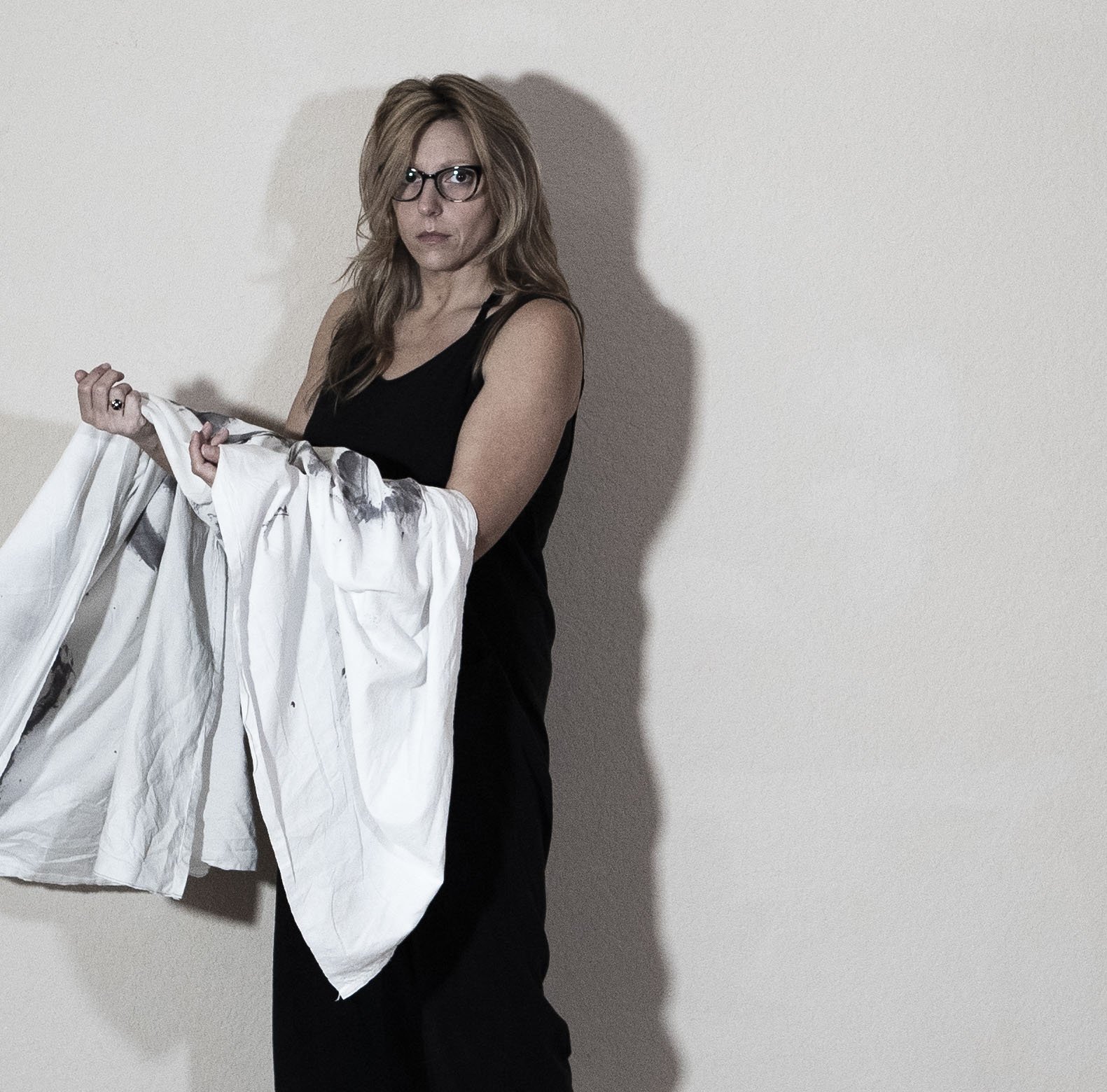
In paradisum: Voluntas
Experimental Documentary/Performance13:00
The “In paradisum" ("Into paradise") is the final part of the Requiem Mass. It occurs as the body is being taken out of the church. It begins: In paradisum deducant te Angeli (May the Angels lead thee into paradise). Voluntas is Latin for “desire,” “choice,” and/or “purpose.” Being a caretaker becomes a part of one’s identity: their purpose and meaning. Who are they if/when their loved-one passes away? In this film, the artist performs her own bedtime routine. It echoes Oblatio, but the caretaker is caring for herself, by herself. During this rather mundane task, shards of memories cut in and out. This connotes the new conundrum: “What now?” It is at this moment—now—that a choice needs to be made. If the angels have led her father into “paradise,” then it has to be possible for her, here and now. The prayer for him becomes her choice: live vibrantly in reality, rather than die in numbness and depression.